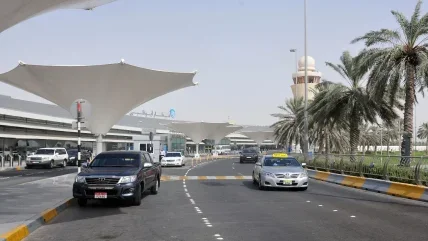
Mark Brierley: How has the role of tourism authorities increased in route development over the past decade?
Mohammed al Dhaheri: Specifically for TCA Abu Dhabi, we have, since our inception, recognised the importance of route development and working with strategic stakeholders such as the Abu Dhabi Customs Administration (ADCA) and the national carrier Etihad Airways in promoting Abu Dhabi as a world-class destination.
There have been ongoing consultations and discussions to further benefit the promotion of the destination. We have a very collaborative partnership with these stakeholders, even with other airlines operating in this destination. We think it is just as important for the tourism authority to play its part in route development as it is for the airline and airport operator.
What dialogue exists between TCA Abu Dhabi, ADCA and Etihad regarding route development, and how are development targets identified?
We are in the unique position that we were all created around the same time, so our plans and strategies go hand in hand. TCA Abu Dhabi, has a focus on several key markets, which Etihad also has connectivity with. We work at a tactical level, supporting each other in terms of issues such as marketing objectives.
In addition, TCA Abu Dhabi works with the ADCA and the Department of Transport (DoT) to attract new airlines to Abu Dhabi. Those government entities look at our plans and use them as a frame of reference, so we can all pinpoint key markets.
In 2004, the focus was on medium-haul destinations. We also focused on the characteristics of the visitors, which meant that most of our focus was on Western Europe. Now with other markets emerging, such as Australia, China, India, Russia and the US, we are opening offices across these territories to promote Abu Dhabi further afield.
Is there anywhere you are not currently targeting, but that you will in the future?
We’re up-to-date on what markets we need to focus on, but we don’t currently have a presence in the emerging markets in South America. We are working with Etihad to see if there is a need for us to have an office there and to increase our efforts in that part of the world.
We are also in talks to open an office in India and there is a feasibility study underway. India has risen up the ranks to the point where it has become the second-largest source market of international visitors in terms of hotel guests. We can’t talk in terms of visitors, because we don’t have the mechanism to track all visitors, so we look at hotel guests. That would bring the number of countries in which we have offices up to a total of ten.
How does the authority interact with other airlines and airport authorities at global aviation industry events such as Future Routes? Is there any direct discussion related to routes development or is that left to the ADCA and Etihad?
It depends whether or not we got involved at the route-discussion stage, but we are always in talks with Etihad, the ADCA and the DoT to keep them informed of, for example, when certain facilities are going to open. One of the things airlines look at is the number of flights here, how many visitors there are, the number of hotels guests and the actual infrastructure – the tourism infrastructure in
place that can accommodate those travellers. So, we keep them updated on all these issues, and if Abu Dhabi is being represented at events like this, we will always be a part of the delegation alongside the airline and airport company.
How successful has TCA Abu Dhabi been in route development? Is it possible to gauge how many new routes have begun to visit the emirate since the beginning of the authority’s involvement?
We have been right on the mark for our targets, in terms of the supply of visitors from various destinations and the number of visitors. We plan to increase the number of hotel guests to 2.5 million in 2013. The numbers are increasing in terms of hotel rooms available, and the challenge now is how to fill them. In terms of this region, Abu Dhabi is not the only player here, so we work with all the relevant stakeholders in defining promotional initiatives that will attract visitors to the emirate and help us reach our targets.
Do you see tourism authorities further increasing their role in this rapidly developing market in the future?
Our plans are aligned with the government’s Vision 2030 plans, so we are aiming for over three million hotel guests coming here within five to ten years. Also, we are looking for a balanced supply of hotel rooms that will ensure a sustainable tourism destination. Our main focus now is to enhance our cultural and heritage offering to expand the tourism experience.
Vision 2030 is looking to expand the base of the economy beyond oil revenues. How are you able to get different types of visitors?
We have business travellers and we have tourists. Looking at the projects taking place around Abu Dhabi, you are able to visualise the type of visitors we are aiming for.
We are expanding our cultural attractions by offering a taste of other cultures, such as the construction of the Guggenheim, Louvre and Sheik Zayed museums. These should give you an idea of the type of visitors we are aiming for.






